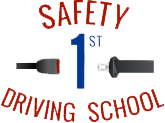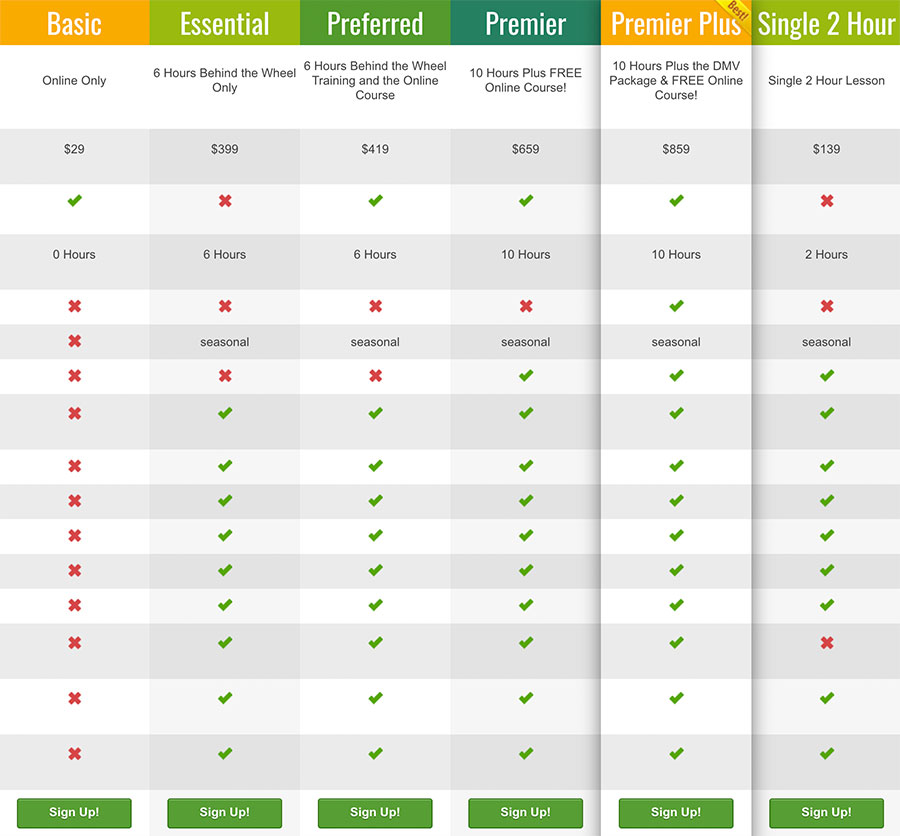As you know, nothing is more dangerous or deadly to teenagers than driving. Nothing is more likely to injure or kill them than that dreaded and yet worshipped deadly weapon: the automobile.
We at Safety 1st Driving School take driver education very seriously. We know the risks associated with putting teenagers behind the wheel, and we are dedicated to educating and training our students in safe and skilled driving. Teenagers need to have a healthy fear and respect for the road.
Note: We are not advocating fear tactics for driver’s ed, because those statistically do not work for teenage drivers; however, we do try to instill in our students a respect for their automobile and an attitude of openness to learning how to become a skilled and safe driver in Orange County.
All 50 states in the U.S. have a 3-stage Graduated Driver’s License (GDL) program. There are no federal laws regarding driver education, so it is up to each state individually to make laws governing their driver education and GDL programs. Research has shown that the states with the strictest laws for teenage drivers see the most reductions in teen crashes and teen driver deaths than those with more relaxed laws.
As we have stated in previous posts, most teenagers lack the full capacity to appreciate the long-term consequences of their actions and often take an overconfident or “invincibility” approach to driving. Therefore it is our job as educators – and your job as parents – to place the proper boundaries on teenage drivers, to reward them for good driving behavior and mature choices, and to restrict them where needed.
California’s Graduated Driver’s License Program
The California government has created some laws restricting new drivers. Here’s a rundown of California’s GDL program:
Stage 1 – Learner’s Permit
This stage requires 50 hours of supervised driving. At least 10 of those hours must be at night.
The driving supervisor can be:
- a professional driver’s education instructor
- a parent or guardian
- an adult over 25 years of age
New drivers must also complete a minimum 6-hour driver’s education course.
Stage 2 – Provisional License
If the teenage driver has complied with all the above requirements and kept a clean driving record, he or she may proceed to Stage 2. (The student’s parent or guardian must have signed off that the student completed all the required driving practice.)
Between 16 and 18 years of age, the student may be granted a provisional license if he or she has passed a behind-the-wheel test.
Drivers under 18 years old are not permitted to use cell phones for talking or texting, EVEN WITH A HANDS-FREE DEVICE.
For the first 12 months (or until the student driver’s 18th birthday), the student may NOT have any passengers under the age of 20, UNLESS a licensed adult 25 years or older is present.
For the first 12 months, student drivers may NOT drive between 11:00 p.m. and 5:00 a.m. without a licensed adult 25 years or older (or if transporting a passenger under 20 years old).
Stage 3 – Full Privileges
If all the above requirements are met and the student has kept a clean driving record, he or she may be granted full driving privileges (but not before the age of 17).
Parents are encouraged to be aware of their teenager’s driving strengths and weaknesses and set boundaries accordingly – both for their child’s safety and also for the safety of other Orange County drivers. Freeways, night driving, driving with passengers, cell phones and radios – these are all statistically dangerous situations for a teenage driver. Sure, your kid might be upset with you, but isn’t his or her safety more important? You’re the adult – if your kid lacks the ability to make wise choices behind the wheel, do not give them carte blanche driving freedom. Driving is a privilege, not a right.
We at Safety 1st Driving School are happy to provide several packages for behind-the-wheel instruction, including the 50 hours of supervised practice driving they need in order to get their Provisional License. Check out our Packages page for more information.


